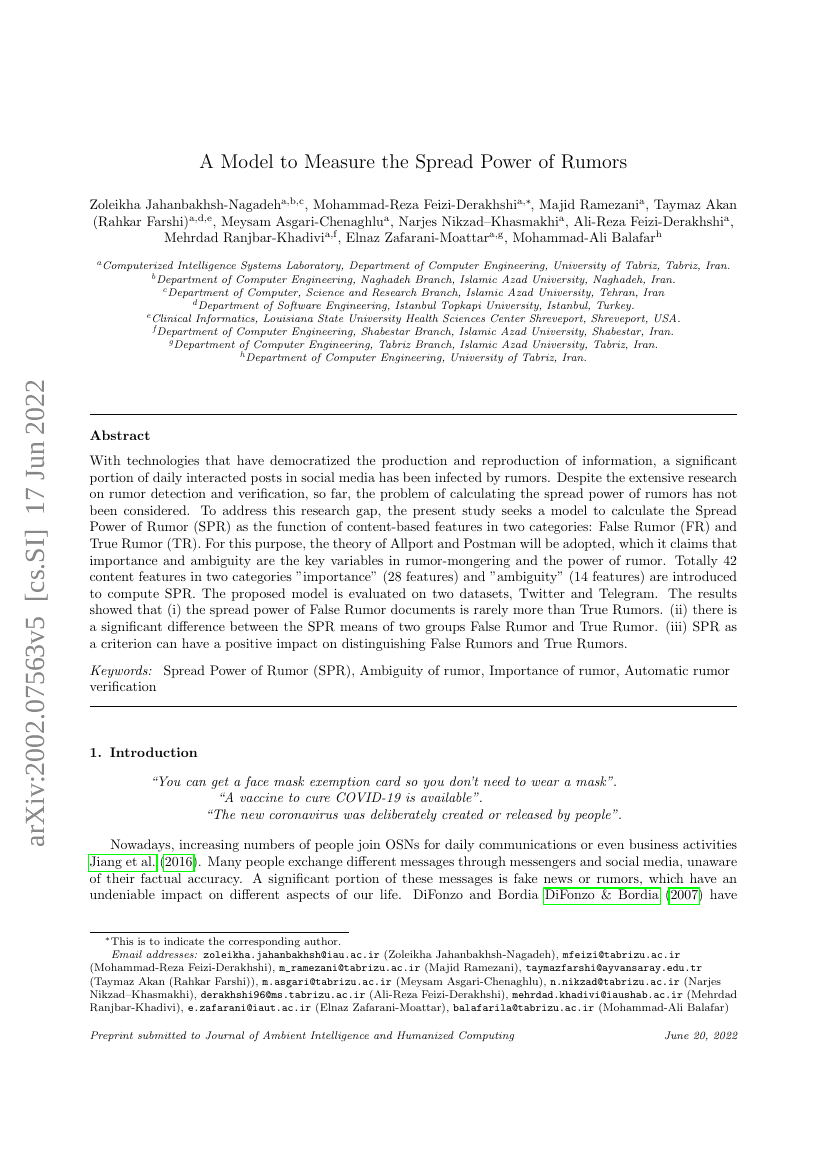Command Palette
Search for a command to run...
Zoleikha Jahanbakhsh-Nagadeh Mohammad-Reza Feizi-Derakhshi Majid Ramezani Taymaz Akan Meysam Asgari-Chenaghlu Narjes Nikzad-Khasmakhi Ali-Reza Feizi-Derakhshi Mehrdad Ranjbar-Khadivi Elnaz Zafarani-Moattar Mohammad-Ali Balafar

Abstract
With technologies that have democratized the production and reproduction of information, a significant portion of daily interacted posts in social media has been infected by rumors. Despite the extensive research on rumor detection and verification, so far, the problem of calculating the spread power of rumors has not been considered. To address this research gap, the present study seeks a model to calculate the Spread Power of Rumor (SPR) as the function of content-based features in two categories: False Rumor (FR) and True Rumor (TR). For this purpose, the theory of Allport and Postman will be adopted, which it claims that importance and ambiguity are the key variables in rumor-mongering and the power of rumor. Totally 42 content features in two categories "importance" (28 features) and "ambiguity" (14 features) are introduced to compute SPR. The proposed model is evaluated on two datasets, Twitter and Telegram. The results showed that (i) the spread power of False Rumor documents is rarely more than True Rumors. (ii) there is a significant difference between the SPR means of two groups False Rumor and True Rumor. (iii) SPR as a criterion can have a positive impact on distinguishing False Rumors and True Rumors.
Benchmarks
| Benchmark | Methodology | Metrics |
|---|---|---|
| rumour-detection-on-sepehr-rumtel01 | Jahanbakhsh-Nagadeh et al. | F-Measure: 0.828 |
Build AI with AI
From idea to launch — accelerate your AI development with free AI co-coding, out-of-the-box environment and best price of GPUs.